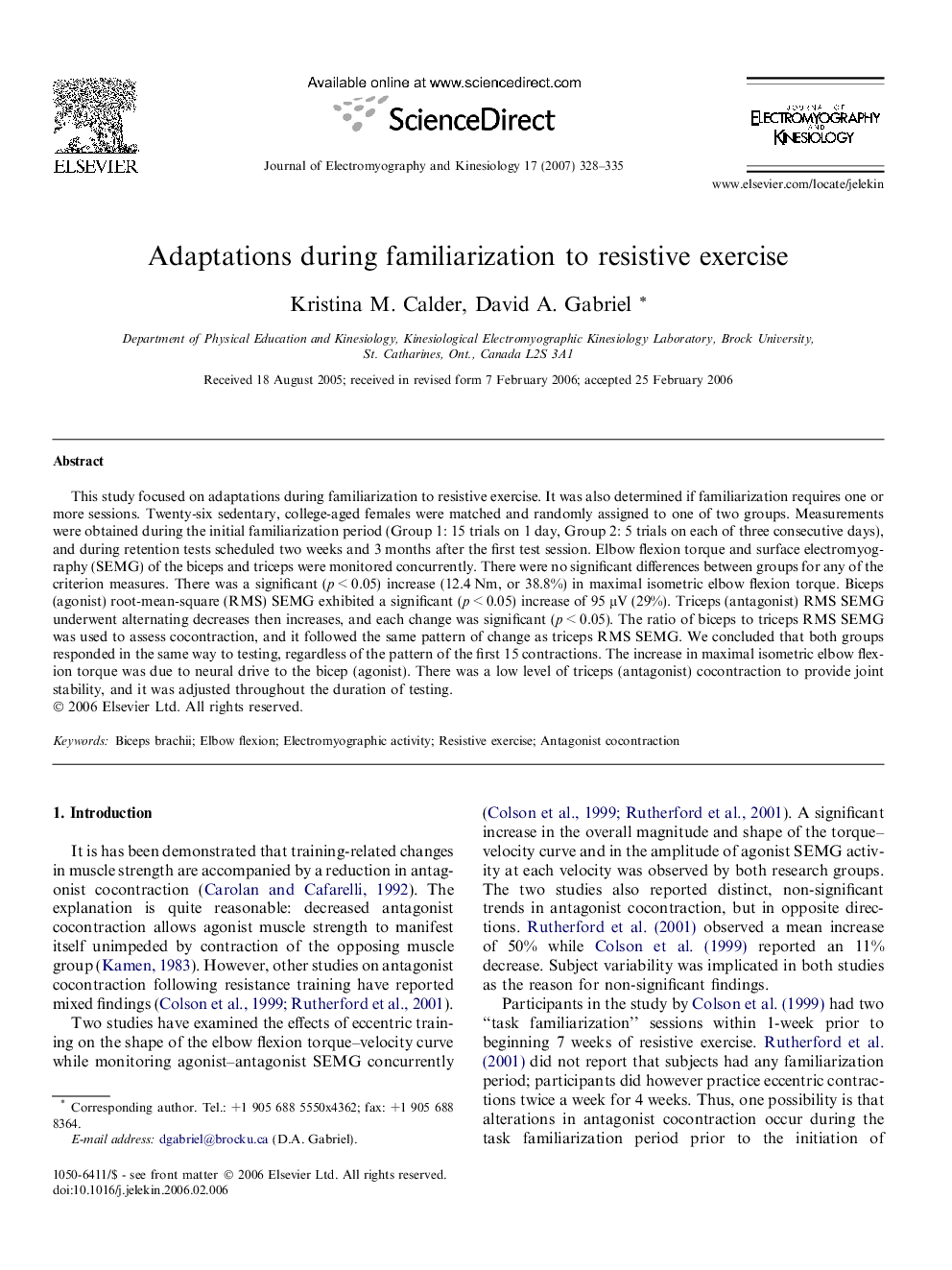| Article ID | Journal | Published Year | Pages | File Type |
|---|---|---|---|---|
| 4065593 | Journal of Electromyography and Kinesiology | 2007 | 8 Pages |
This study focused on adaptations during familiarization to resistive exercise. It was also determined if familiarization requires one or more sessions. Twenty-six sedentary, college-aged females were matched and randomly assigned to one of two groups. Measurements were obtained during the initial familiarization period (Group 1: 15 trials on 1 day, Group 2: 5 trials on each of three consecutive days), and during retention tests scheduled two weeks and 3 months after the first test session. Elbow flexion torque and surface electromyography (SEMG) of the biceps and triceps were monitored concurrently. There were no significant differences between groups for any of the criterion measures. There was a significant (p < 0.05) increase (12.4 Nm, or 38.8%) in maximal isometric elbow flexion torque. Biceps (agonist) root-mean-square (RMS) SEMG exhibited a significant (p < 0.05) increase of 95 μV (29%). Triceps (antagonist) RMS SEMG underwent alternating decreases then increases, and each change was significant (p < 0.05). The ratio of biceps to triceps RMS SEMG was used to assess cocontraction, and it followed the same pattern of change as triceps RMS SEMG. We concluded that both groups responded in the same way to testing, regardless of the pattern of the first 15 contractions. The increase in maximal isometric elbow flexion torque was due to neural drive to the bicep (agonist). There was a low level of triceps (antagonist) cocontraction to provide joint stability, and it was adjusted throughout the duration of testing.
